Better solution to a challenging problem
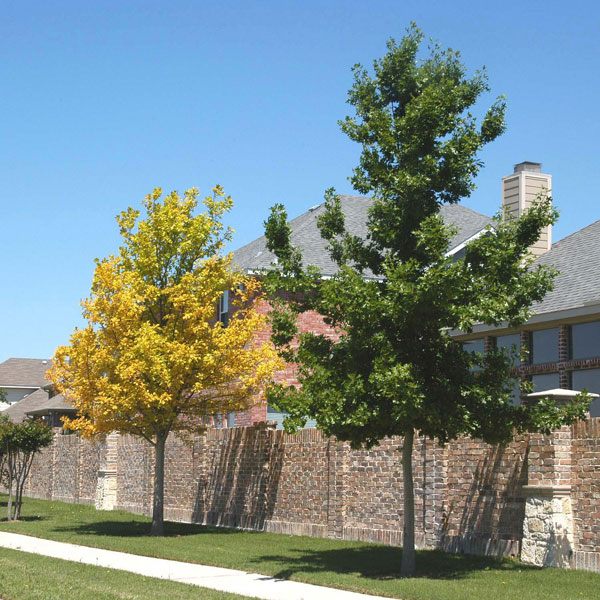
I decided 35 or 40 years ago that I just needed to get right to the point in answering one particular question that kept coming up.
“Neil, my red oak’s leaves are turning yellow. The problem is getting worse and worse. Can I save my tree? I bought it 8 years ago.”
At that point I can narrow the possible causes down to two.
• The person was sold a pin oak (Quercus palustris) instead of a Shumard red oak (Q. shumardii). It’s an easy mistake to make, and it usually happens at the wholesale end, not where you’re buying the tree at retail.
or…
• The tree may have been planted carefully, but its trunk might not have been protected from exposure to afternoon sun its first couple of summers.
I’ll address them in that order…
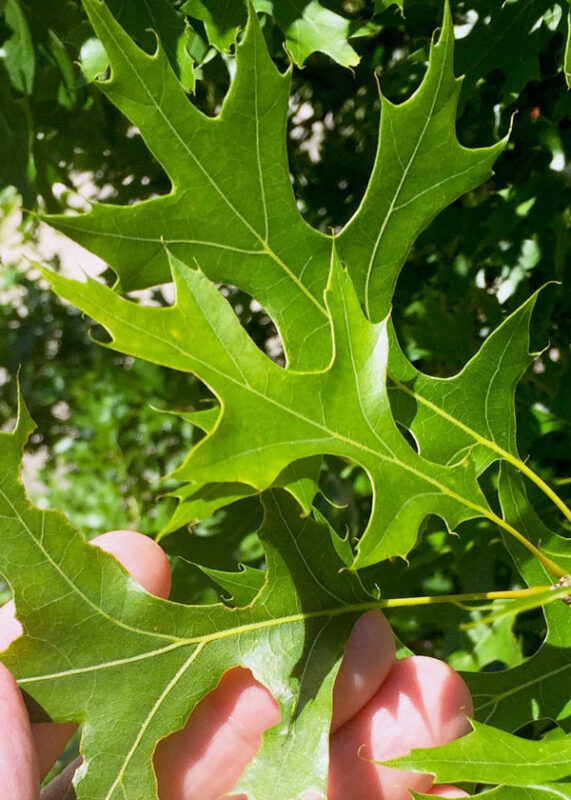
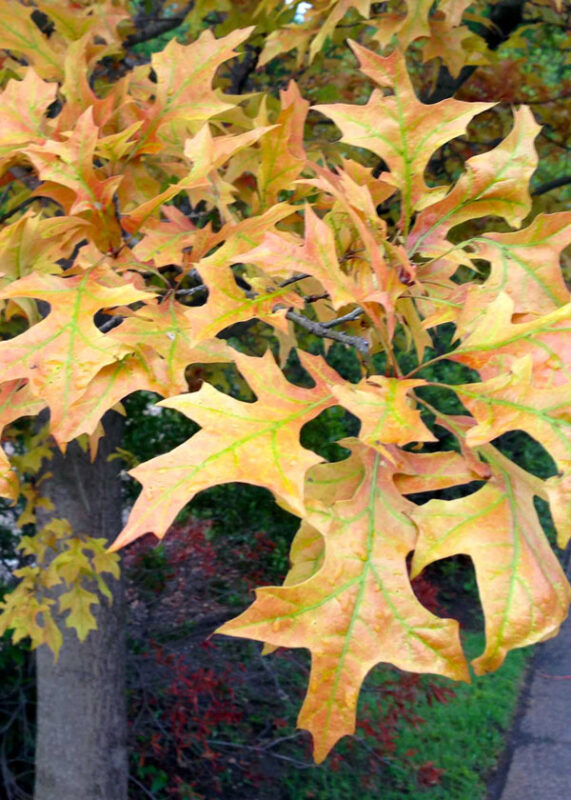
Shumard red oak leaves on the left are very similar in shape to the pin oak leaves on the right, but there are obvious differences. What’s going on?
Pin oak and Shumard red oak look very similar. Both have leaves about the same size and both with pointed lobes. If you’re looking at only a handful of leaves it might be difficult to tell one from the other when they’re healthy. However, pin oaks’ lower branches tend to hang downward, much like those of a Christmas tree (unless they’ve been removed like the ones on the tree in my photo above). Shumard red oaks’ branches usually ascend.
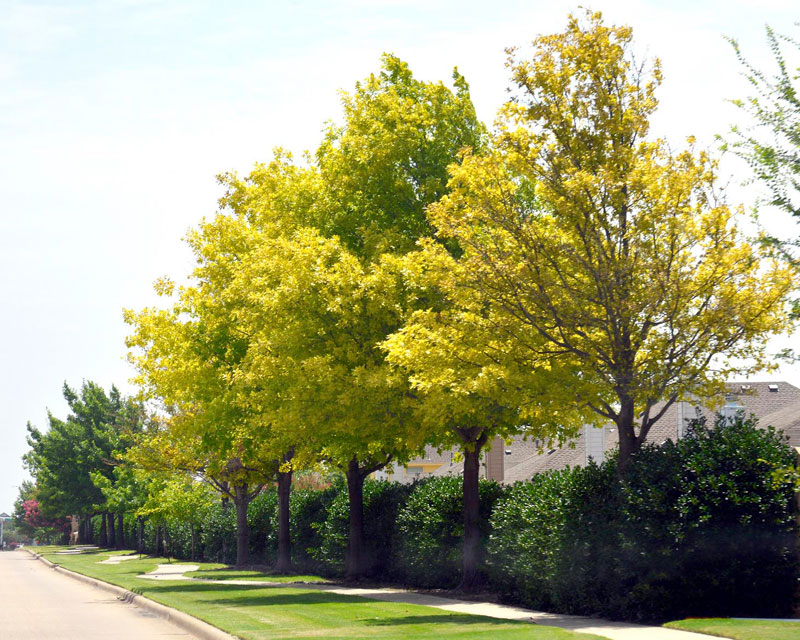
Unfortunately, the best way to tell the two species apart may be to plant them in alkaline soils near and west of I-35. Shumard red oaks handle the alkaline soils quite well, but pin oaks start to run out of “available” iron after a few years. They can’t pull enough iron out of the soil. It is rendered insoluble by the alkaline conditions of the soil and the irrigation water.
This same thing will happen to slash and loblolly pines, sweet gums, and several other East Texas species when we try to grow them in alkaline soils of the western 75 percent of our state.
Here’s where I rip the bandage off quickly.
If you end up with one of these trees of the wrong species, there is no point in trying to add iron and soil acidifier to its root zone. Even if you’re successful for a year or two, the tree will outgrow your finances and ability to meet its needs into the future. It’s time to have it removed and to plant a better-adapted species.
And, for the other possibility…
More and more often I’m seeing young trees that are being exposed to blazing sun without benefit of a protective tree wrap. After 2 or 3 years their trunks start to crack and split, then chunks of bark fall off and the internal wood is left exposed to the elements. Soon decay sets in and, if the tree can’t form new bark to cover the injured tissues, the tree is lost.
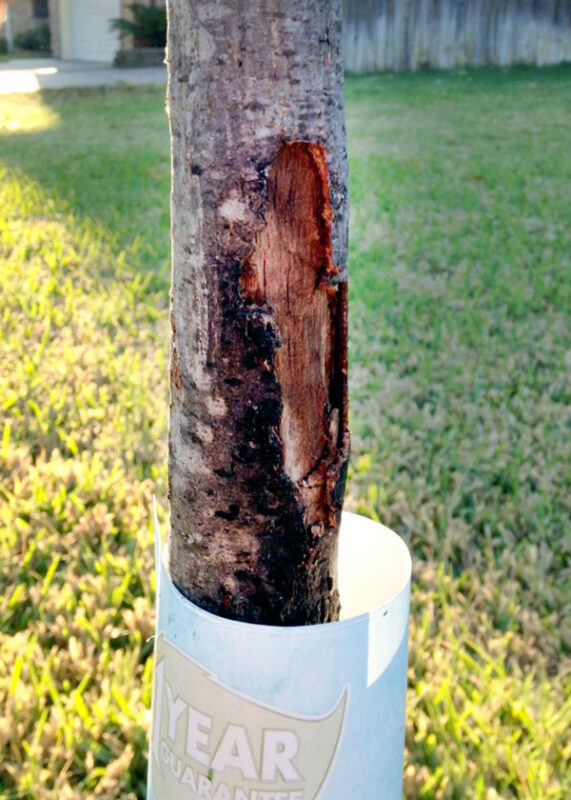
There is no “cure” once this happens, but there is an easy prevention to keep it from happening in the first place. Wrap the trunks of every new shade tree with one of the paper or plastic tree wrap products. Leave it in place for two years. By then the tree’s canopy should be dense enough to cast good shade and protection.
This protection is critical for oaks, but it’s also essential for maples, pistachios and all other thin-barked shade trees. Just a few dollars spent on the wrap can save you scores or hundreds of dollars and precious years with a mistake.
